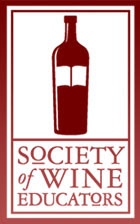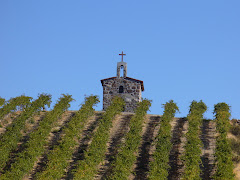 A lot of folks close to me know that I am continually studying for my Master Sommelier certification, as well as my Wine Educator certificate and my Master of Wine. It is a never-ending process of home schooling, like I am prepping for Finals every single day. I am not complaining, mind you, because in a lot of ways, I really miss school. Particularly college, because I went back later in life, and I was able to appreciate its significant impact on my life. I really liked being challenged to approach things in new ways, and think in manners I hadn’t imagined before.
A lot of folks close to me know that I am continually studying for my Master Sommelier certification, as well as my Wine Educator certificate and my Master of Wine. It is a never-ending process of home schooling, like I am prepping for Finals every single day. I am not complaining, mind you, because in a lot of ways, I really miss school. Particularly college, because I went back later in life, and I was able to appreciate its significant impact on my life. I really liked being challenged to approach things in new ways, and think in manners I hadn’t imagined before.Next month, I take my Certified Specialist of Wine exam, which is the first step in becoming a Certified Wine Educator. And in preparing for the exam, I am finding it in many ways, a more thorough and specific curriculum than when I took the 1st level MS test.
For starters, I find myself going over more of the specifics of general viticulture and how those processes pertain to the various winemaking grapes. There seems to be more time spent on the common traits of grape personalities (their general aromas and flavors in their resultant wines) and specifically how still, sparkling and fortified wines are made.
What I really enjoy about the study guide provided by the Society of Wine Educators (the organization charged with certifying the CSW and CWE students) is that each chapter on a given subject is authored by an expert in that particular field. For example, Alfredo Bartholomaus, president of Billington Imports, which represents such brands as Catena and Cousino-Macul, pens the chapter on Argentina, and Sharron McCarthy, VP of Wine Education for Banfi Vintners, writes the chapter pertaining to Italy.
Currently, I am going over Fortified Wine Production, and specifically Sherry. I am not a fan of Sherry, though I appreciate and respect the level of difficulty that goes into Sherry, which not unlike Champagne, is one of the most difficult processes in winemaking.
The production of making sherry is completed in 13 steps: Pressing, Acidification, Racking (also known as Debourbage), Fermentation, Classification, Fortification, Aging, Growth of the Flor in Fino, Aging the olorosos, The solera process, Working the scales, Blending, and Finishing.
 The main grape used for Sherry is Palomino, and typically, a bladder press is used to extract the juice from the grapes gently and cleanly, preventing bitter tannins to leech into the juice. After acidification, the Palomino juice goes through wild yeast fermentation which lasts anywhere from 3 days to a week at temperatures between 75 and 84 degrees Fahrenheit. Afterward, malolactic fermentation is done.
The main grape used for Sherry is Palomino, and typically, a bladder press is used to extract the juice from the grapes gently and cleanly, preventing bitter tannins to leech into the juice. After acidification, the Palomino juice goes through wild yeast fermentation which lasts anywhere from 3 days to a week at temperatures between 75 and 84 degrees Fahrenheit. Afterward, malolactic fermentation is done.The juice is then tasted and classified either fino or oloroso. Fino sherries are much drier, and can be either manzanilla, amontillado or fino. Oloroso sherries are sweeter and are broken down as oloroso or rayas. These wines are classified by a simple criteria of color, clarity, aroma and flavor. The lots that are the palest, clearest, most aromatic and least bitter are the highest valued and end up as finos.
Fortification begins with the addition of a grape spirit mixture, and the alcohol is raised to 15 to 15.5%. Olorosos go as high as 18%. The aging process is then begun in barrel, and depending on it being fino or oloroso, the wine takes a different path to bottle. For fino, the flor – a thin layer of yeasts on the surface of the wine that forms after fermentation – remains in contact with the juice to lessen acidity and increase density in the wine. In the case of oloroso, there is more direct oxygen contact with the juice, and oxidizes more rapidly to darken the color and add to its body.
The solera system comes into play after these processes. The solera is a gravity-flow tank system that feeds the wine from tank to tank, one below the next, feeding the youngest juice into the next oldest, and so on, until the resultant blend is the winemaker’s desired consistency.
At bottling, 5 to 33% of the oldest wine is removed from the solera and replaced with younger wine, called “scale” to balance out the wine, in each tank, so that the first tier is topped off with the current vintage wine, referred to as anada.
At blending, the wine is completed with what is can either be vino de color or vino dulce. The vino de color mix contains the darkened must of the Moscatel grape, while the vino dulce is that of the Pedro Ximenez. The wine is then fined with egg whites, filtered and cold stabilized before being bottled.
Granted, that is a pretty simple explanation, and there are details left out, but it gives you the general idea of how complicated the sherry winemaking process is.
There are six types of sherry:
Fino is thought of as the driest. It is light and delicate, with a salty, nutty quality.
Manzanilla is only slightly sweeter and darker than fino. There is more body, color and alcohol than fino.
Amontillado is even more maderized in flavor and aroma. And thanks to Edgar Allan Poe, is probably the most known of the sherries here in the U.S.
Palo Cortado is an extremely rare sherry that results rom no flor. It possesses the aromas of an amontillado yet the color and flavor of an oloroso.
Oloroso is a sweeter style and can be quite dark in color. It possesses a higher alcohol content and more glycerol notes than a fino.
Raya is more aromatic and seems more oxidized and maderized than oloroso.
For those of you who have always wanted to try sherry but have always believed that these are just cooking wines, a really unique food pairing is sushi and fino. It really works well together. It also goes great with omelettes and fritattas. And a chilled fino or manzanillo may be the best aperitif on earth. Give it a try.
Over the month of May, I’ll be filling you in on what I am reviewing next, and maybe you too can learn a bit more in the process.











No comments:
Post a Comment